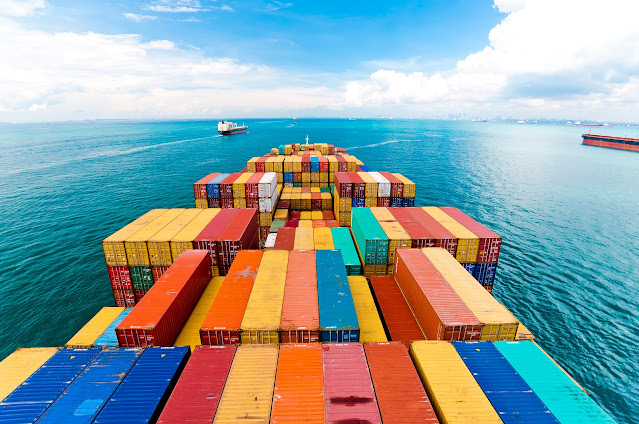Sustainable Shipping Container and Reducing the Carbon Footprint with Container Solutions
 |
| Shipping Container |
As the world becomes more conscious of the environmental
impact of various industries, the shipping sector is also striving to adopt
sustainable practices. One innovative solution gaining traction is the
utilization of container solutions to reduce the carbon footprint of shipping.
- The
Environmental Challenge: The shipping industry plays a crucial role in
global trade, but it is also a significant contributor to carbon
emissions. Traditional shipping methods rely heavily on fossil fuels,
resulting in greenhouse gas emissions, air pollution, and marine ecosystem
degradation.
- Containerization:
A Game-Changer: Containerization revolutionized the shipping industry by
standardizing cargo transportation. These standardized shipping containers
provide a unique opportunity to implement sustainable practices. They can
be repurposed for various applications, reducing waste and minimizing the
need for new resources.
- Eco-friendly
Container Designs: To enhance sustainability, shipment containers are
being redesigned with environmentally friendly features. Some companies
are incorporating solar panels on container roofs to generate clean energy
for onboard systems. Others are utilizing advanced insulation materials to
reduce energy consumption during transportation.
- Green
Power Solutions: Container ships are exploring alternative energy sources
to reduce reliance on fossil fuels. One example is the adoption of hybrid
propulsion systems that combine traditional fuels with renewable energy
sources like wind or solar power. These innovations are gradually reducing
emissions and improving fuel efficiency.
According to Coherent Market Insights, The Global
Shipping Container Market is estimated to account for US$ 11,168.8 Mn in
terms of value by the end of 2021 and is expected to grow at a CAGR of 6.1%
during the forecasted period (2022-2030).
- Container
Farms and Gardens: Shipping containers are being transformed into
self-contained farms and gardens. By utilizing hydroponic or aeroponic
systems, crops can be grown vertically, minimizing land use and water
consumption. Container farms provide fresh produce in urban areas, reducing
the need for long-distance transportation.
- Last-Mile
Delivery Efficiency: The "last mile" of delivery is a critical
aspect of the shipping process. By strategically placing containers in
urban areas, companies can store goods closer to their final destinations,
reducing the distance traveled and optimizing efficiency. This approach
minimizes the use of traditional delivery vehicles, thus reducing
emissions.
- Collaboration
and Industry Initiatives: To drive sustainable practices in shipping,
industry collaborations and initiatives are essential. Organizations like
the World Shipping Council and the Clean Shipping Coalition are working to
develop and promote greener standards, regulations, and best practices for
the shipping sector.
The shipping
container industry is undergoing a transformation towards
sustainability, and container solutions are playing a significant role in
reducing its carbon footprint. Through innovative designs, alternative power
sources, and repurposing efforts, shipping containers are promoting
eco-friendly practices and optimizing logistics. By embracing these solutions,
the industry is taking steps towards a more sustainable and environmentally
conscious future, ensuring a better world for generations to come.



Comments
Post a Comment